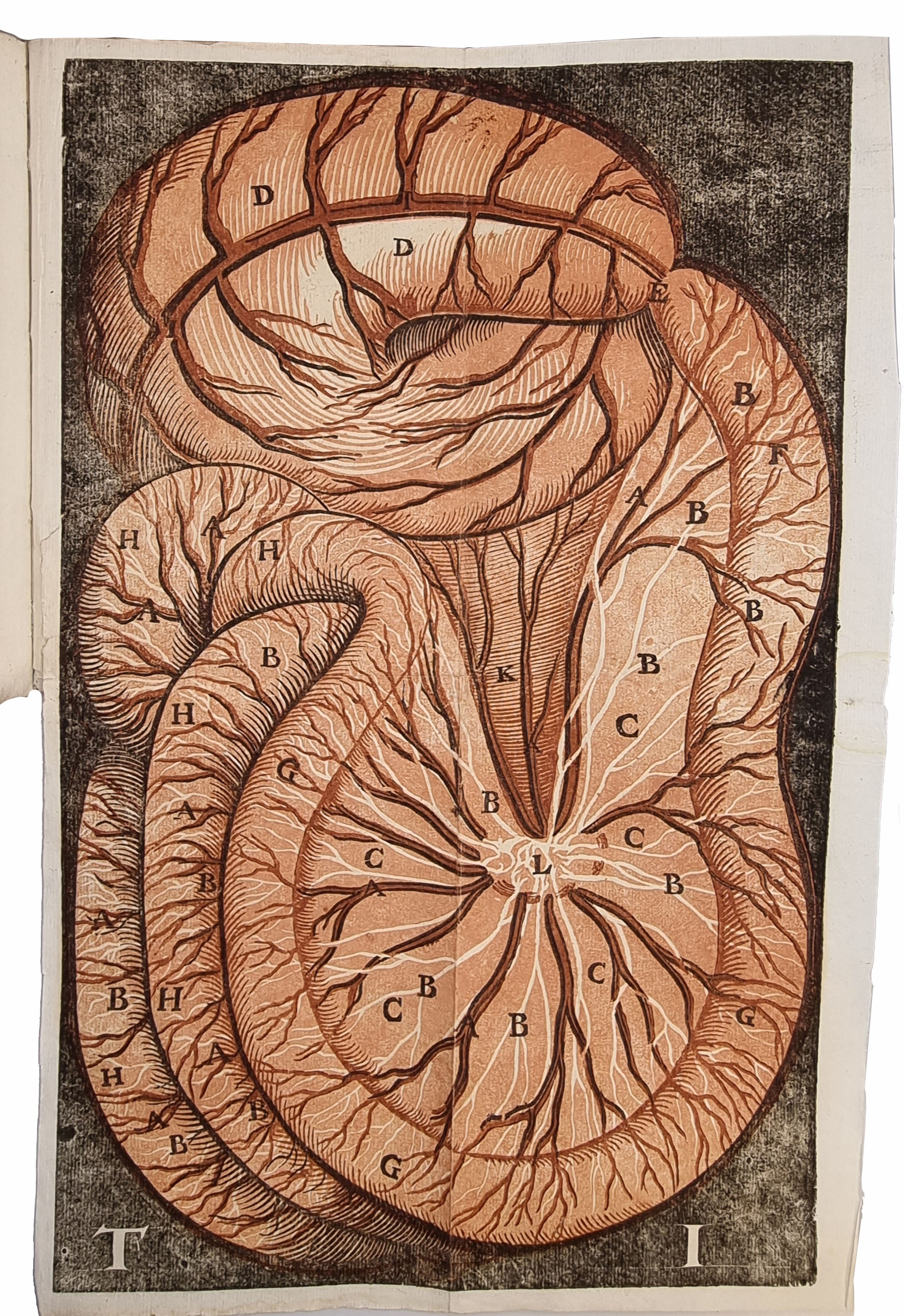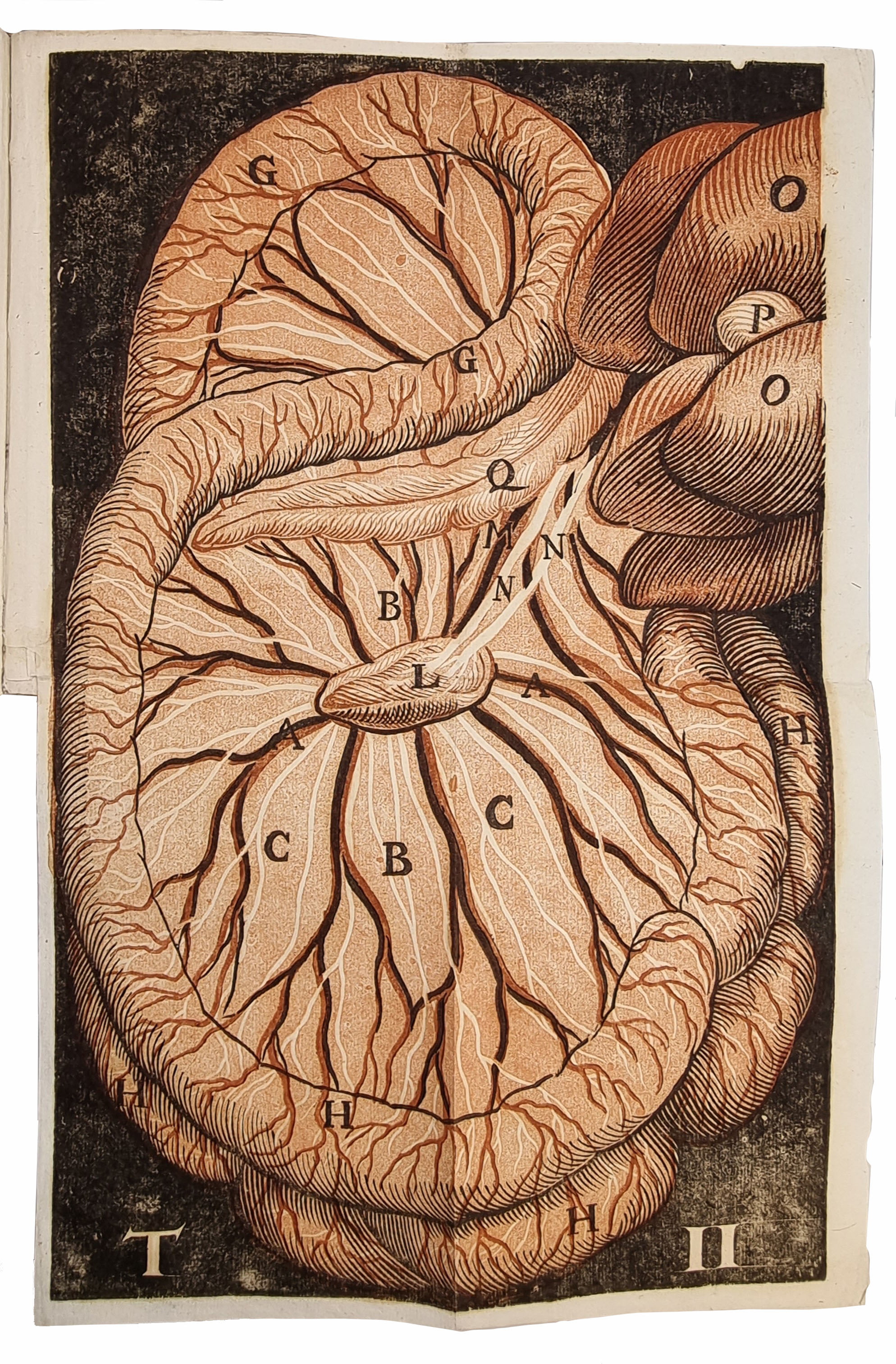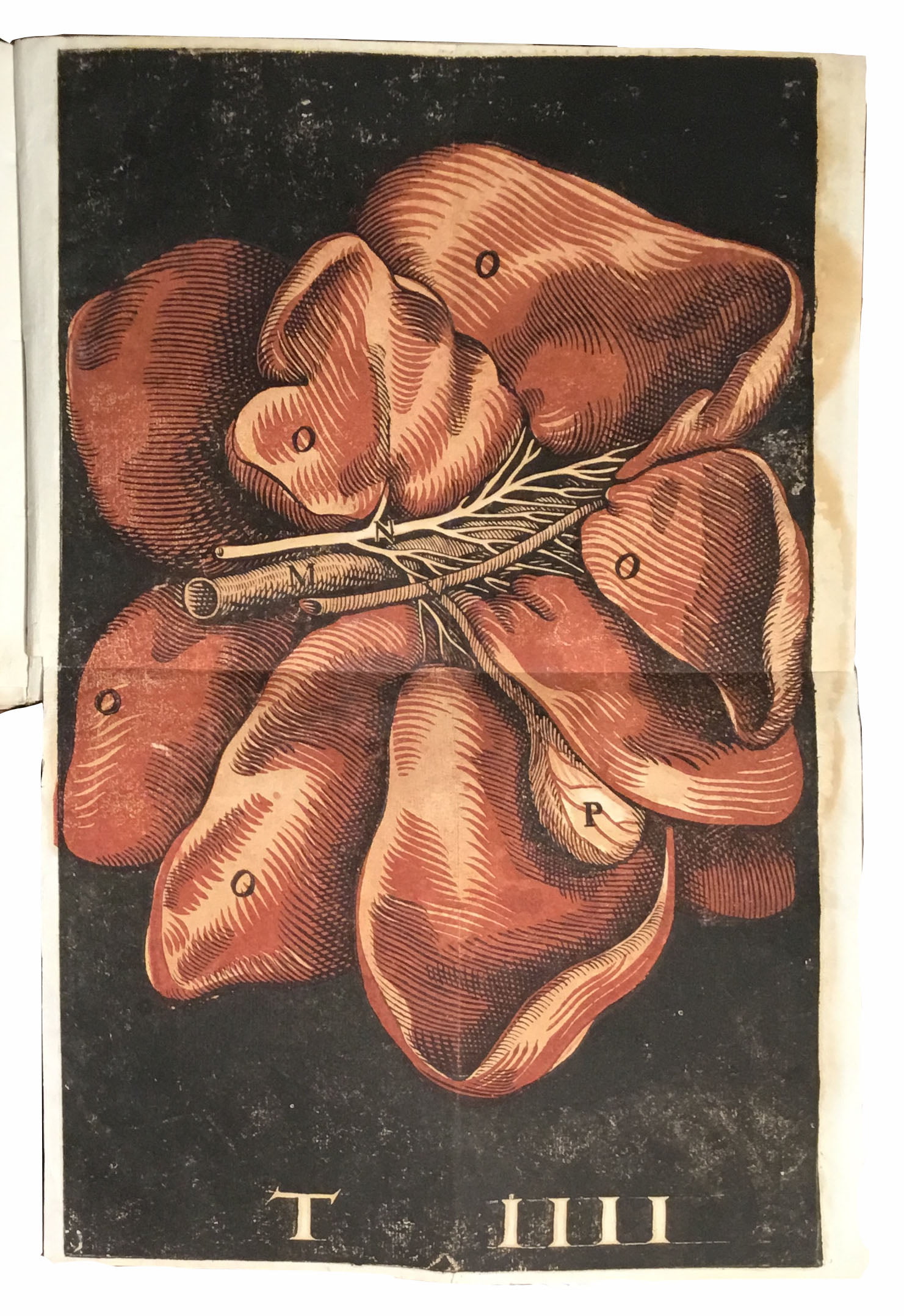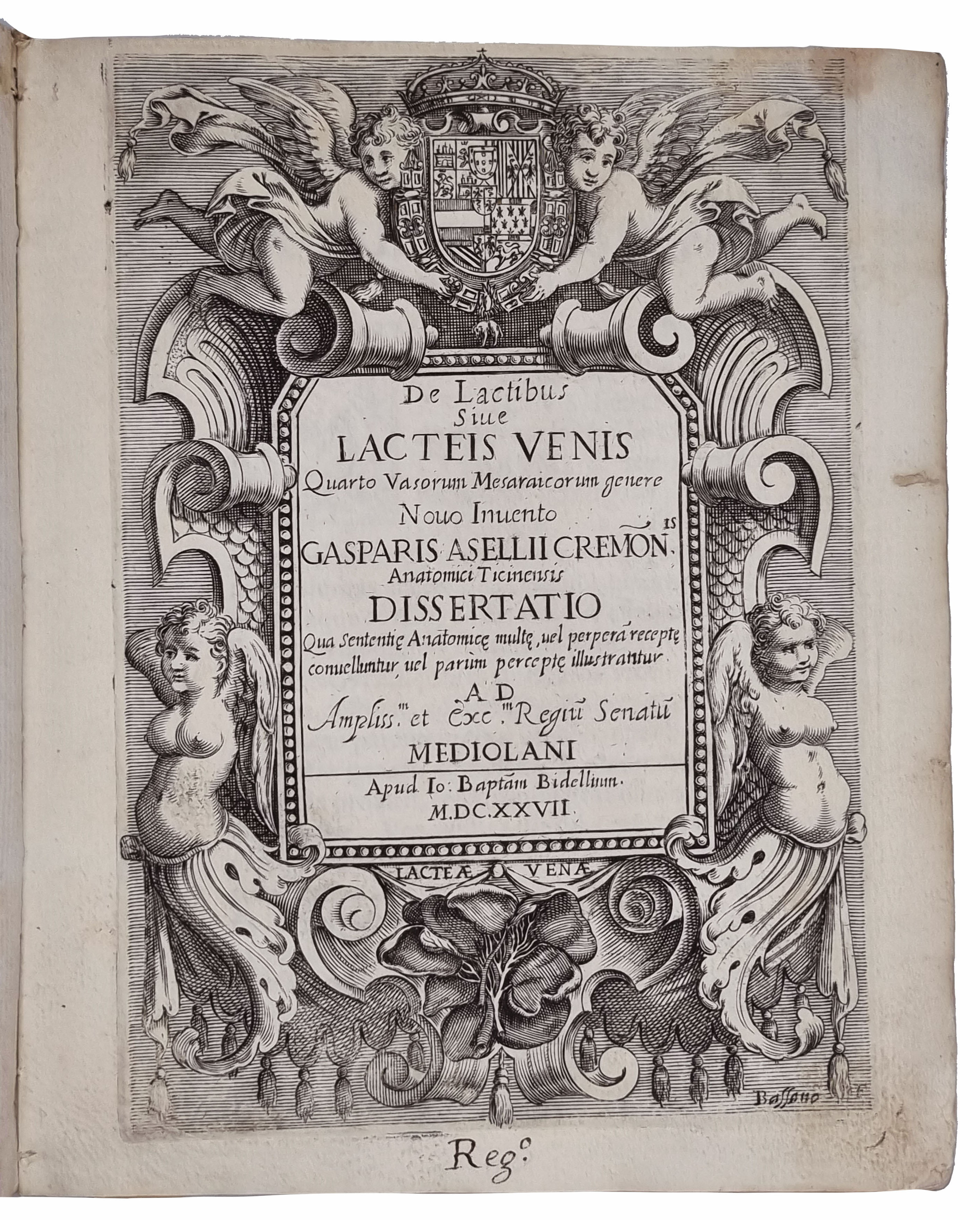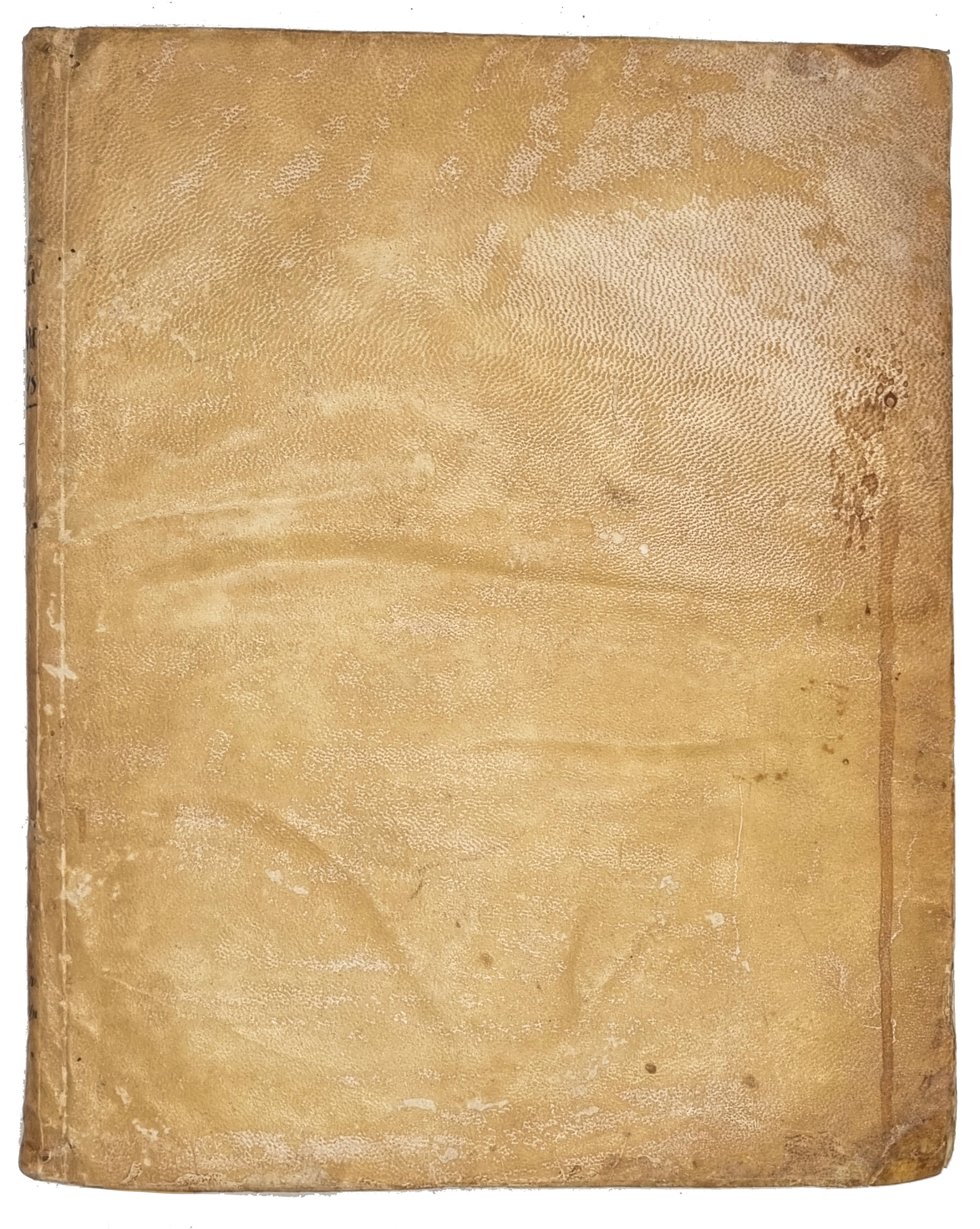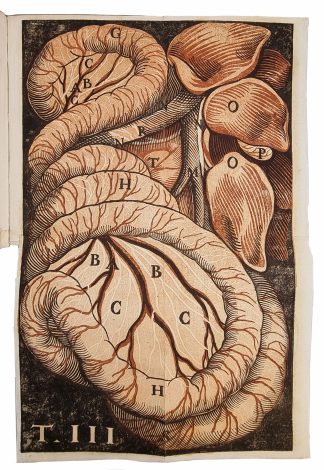ASELLI, Gaspare
FIRST MEDICAL ILLUSTRATIONS PRINTED IN COLOUR
De lactibus sive lacteis venis
Milan, apud Ioan Baptistam Bidellum, 1627£59,500.00
FIRST EDITION. 4to. Pp. (xvi) 79 (ix) + 4 folding coloured plates. Roman letter, little Italic, occasional Greek. T-p by Bassano within framed border of cherubs supporting arms of Philip IV of Spain as ruler of the Duchy of Milan; four large, folding colour-printed plates showing internal animal organs in very good, strong impression; full-page engraved portrait of the author also by Bassano; decorated initials and ornaments. Very slight age yellowing, first gathering little thumbed, lower outer edge of engraved t-p a trifle frayed and little dusty, tiny paper flaw to lower outer blank corner of A1, ancient minor repair at lower fold of two plates, small water stain to outer blank margin of one. Excellent copy in contemporary vellum, little wear. Ms ‘Ex-libris doctoris Joseph Peregi Phisici Collegi Mantua[nis] 1651’ and ‘Musei Aloysii Francisci Castellani Phil. et Med. Doct. 1752’ to fly, first ex-libris also inked to rear blank, ‘Rego’ to lower blank margin of engraved t-p.
Excellent copy, with interesting provenance, of the scarce first edition of this important medical work—complete with ‘the first colour-printed scientifically accurate medical illustrations’ (‘Colour Printing in Relief’, 35). ‘The woodcuts are treated in a very spirited manner and in coloured chiaroscuro. On each plate four colours are used as follows: black for the background, the contours, and the crosshatching, and also for indicating the veins and for the letter engraved upon the figures; white, the colour of the paper, for numbering the plates on the black background and for the chyliferous vessels in the figures; dark red for the arteries, for cross-hatching, and for shadows en masse; light red for the surfaces of the intestines, the mesentery, and the liver’ (Choulant, 240). Gaspare Aselli (c.1581-1625) was an Italian physician and professor at Pavia, famous for his discovery of the lacteal vessels—lymphatic vessels that absorb dietary fats in the small intestine—a summary of which was first published in this work. The colour-printed illustrations were of animal organs (a dog’s lacteal vessels, mesentery and liver), and were not replicated in colour in the 1628 and 1640 editions. They were probably inspired by the hand-coloured anatomical plates in the library of Girolamo Fabricius d’Acquapendente, bequeathed to the Biblioteca Marciana in Venice in 1622—’the first naturalistic paintings of the internal parts of animals’; their style, the large size and the black background, present also in Aselli’s plates, are reminiscent of Caravaggio. One of the physicians who assisted in the printing of Aselli’s work was, we know from his letters, in touch with Fabricius whilst studying at Padua in the 1610s; he may have provided a model (Ekholm, ‘Fabricius’, 350-52). This copy belonged to two physicians at the medical school in Mantua. In 1651, it was in the library of Giuseppe Perego; in 1752, in that of Luigi Francesco Castellani, author, among others, of a work on tuberculosis and contagion. A scarce, important book for the history of medicine and medical book illustration.
Garrison-Morton 1094; Wellcome I, 506 (1640 ed. only); Osleriana 1846; Choulant, Hist. and bib. of anatomic ill., 6975 (pp. 240-41). Not in Heirs of Hippocrates or Durling. E. Savage, ‘Colour Printing in Relief before c.1700’, in Printing Colour 1400-1700, ed. A. Stijnman and E. Savage (Leiden, 2015), 23-41; K.J. Ekholm, ‘Fabricius’s and Harvey’s Representations of Animal Generation’, Annals of Science 67 (2010), 329-52.In stock



